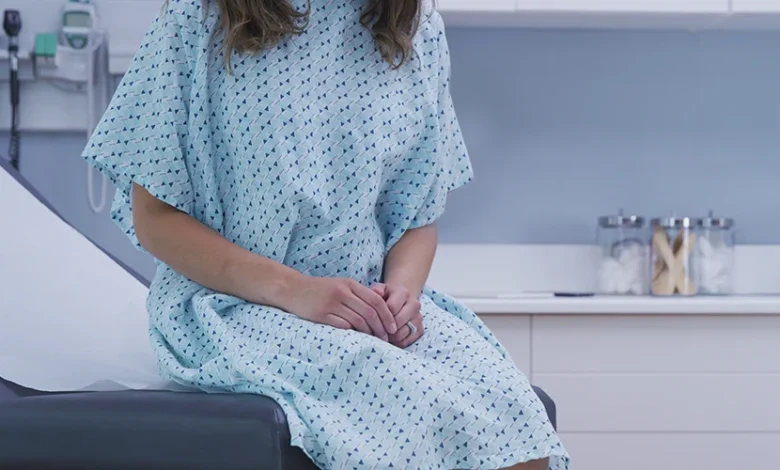Patient Gowns: A Crucial Element in Healthcare Comfort and Safety

Patient gowns are a fundamental component of the healthcare industry. Whether in hospitals, clinics, or healthcare facilities, these gowns are more than just a piece of clothing; they play a crucial role in maintaining hygiene, ensuring patient comfort, and enabling medical professionals to perform their duties efficiently. This article explores the significance of patient gowns, their various types, materials, and key considerations for choosing the right one for healthcare environments.
Importance of Patient Gowns
Patient gowns are designed to provide patients with a garment that is easy to wear, clean, and accessible for medical procedures. They serve several critical functions, including:
Hygiene and Sterility: Patient gowns act as a barrier to prevent cross-contamination between patients and medical staff. In healthcare settings, maintaining a sterile environment is essential to reduce the spread of infections. The gowns are typically made of materials that can be easily disinfected or disposed of after use, ensuring cleanliness.
Comfort for Patients: Patient comfort is a key aspect of recovery, and the design of patient gowns reflects this. Gowns are created to be loose-fitting and non-restrictive, allowing patients to move comfortably. This is particularly important for individuals who need to remain in bed for extended periods or who are undergoing various medical procedures.
Access for Medical Staff: Patient gowns are designed with medical access in mind. They allow healthcare professionals to examine, monitor, and treat patients easily, whether for routine check-ups, surgical procedures, or emergency care. The open-back design or easy-to-remove fastenings ensure that doctors and nurses can efficiently access different areas of the body without causing discomfort to the patient.
Patient Dignity: While patient gowns are designed for practical purposes, they also take into account the dignity of patients. Modern patient gown designs strive to balance accessibility for medical professionals with a level of coverage that maintains a patient’s privacy. This helps alleviate the anxiety and vulnerability that many patients feel when in a healthcare setting.
Types of Patient Gowns
There are several types of patient gowns available, each designed for different healthcare needs. These include:
Standard Hospital Gowns: These are the most common type of patient gown, typically used in general hospital settings. They are often made from cotton or polyester blends, which are comfortable, breathable, and easy to clean. Standard hospital gowns usually have an open back with tie closures, allowing medical staff to easily access the patient’s body.
Surgical Gowns: These gowns are specifically designed for use in operating rooms. They are made from materials that are sterile and fluid-resistant to protect both the patient and surgical team. Surgical gowns are usually longer and cover more of the body, and they may include extra layers of fabric to provide additional protection in areas where exposure to bodily fluids is likely.
Isolation Gowns: Used in situations where infection control is paramount, isolation gowns are often worn by both patients and healthcare staff. These gowns are made from materials that are resistant to fluids and pathogens, reducing the risk of contamination. Isolation gowns are often single-use and disposed of after each patient interaction to maintain strict hygiene protocols.
Disposable Gowns: As the name suggests, disposable patient gowns are intended for single use and are commonly found in situations where there is a high risk of contamination, such as in emergency rooms or during infectious disease outbreaks. These gowns are typically made from lightweight, fluid-resistant materials like polypropylene, offering a cost-effective solution to maintaining hygiene.
Specialty Gowns: Some patient gowns are tailored for specific medical conditions or treatments. For instance, bariatric gowns are designed for larger patients, providing extra coverage and comfort. Maternity gowns, on the other hand, are created to accommodate pregnant women and offer easy access for procedures related to childbirth.
Key Considerations for Choosing Patient Gowns
When selecting patient gowns for healthcare environments, several factors must be taken into account to ensure the best experience for both patients and healthcare providers. These considerations include:
Material: The material used in patient gowns is a critical factor. Cotton and polyester blends are commonly chosen for their comfort and breathability, but they must also be durable and easy to clean. For situations requiring high levels of sterility, fluid-resistant materials such as polypropylene are often preferred.
Size and Fit: Patient gowns should be available in various sizes to cater to all patients, ensuring that everyone, regardless of their body type, can wear them comfortably. The design should also allow for easy adjustments, such as tie strings or snaps, to provide a secure fit without restricting movement.
Durability: In healthcare settings, patient gowns are subjected to frequent use and laundering. Therefore, they need to be durable enough to withstand repeated washing and disinfection processes without losing their shape or comfort.
Cost-effectiveness: For healthcare providers, finding a balance between quality and cost is essential. Disposable gowns may be more affordable in high-risk environments, while reusable gowns are more cost-effective in general settings where infection control is less of a concern.
Ease of Use: Patient gowns should be designed for both patients and healthcare staff to use easily. Features such as Velcro closures, snaps, or ties should be simple to operate, allowing quick and hassle-free access for medical procedures.
The Future of Patient Gowns
As healthcare technology advances, so too does the design and functionality of patient gowns. Innovations in fabric technology are leading to the development of gowns that are not only more comfortable but also more effective at reducing the risk of infections. Smart textiles that can monitor a patient’s vital signs are also being explored as a potential future development in patient gown design.
In conclusion, patient gowns are an essential part of healthcare settings, serving both practical and hygienic purposes. They ensure patient comfort, Direct textile store provide medical staff with easy access for treatment, and help maintain a sterile environment. By considering factors such as material, fit, durability, and cost, healthcare providers can select the best patient gowns to meet the needs of their patients and staff. As healthcare continues to evolve, so too will the design and functionality of patient gowns, ensuring that they remain a key element in patient care.



